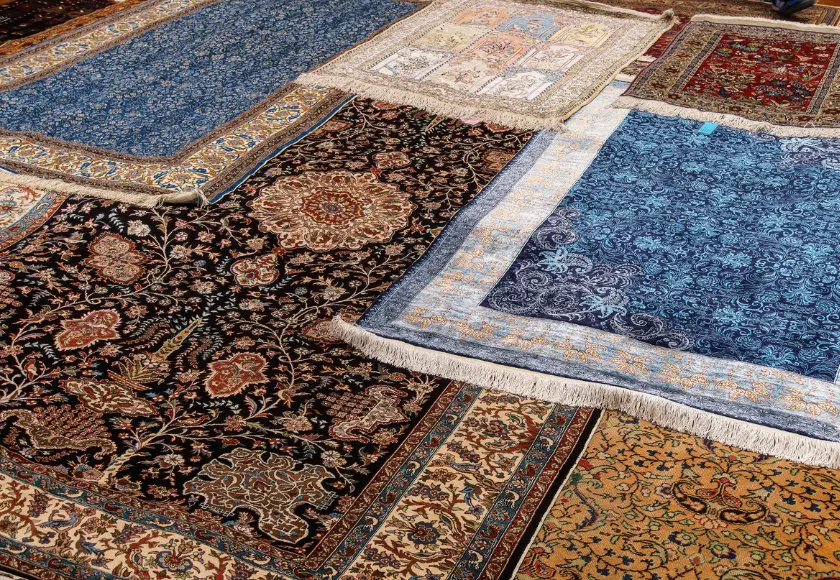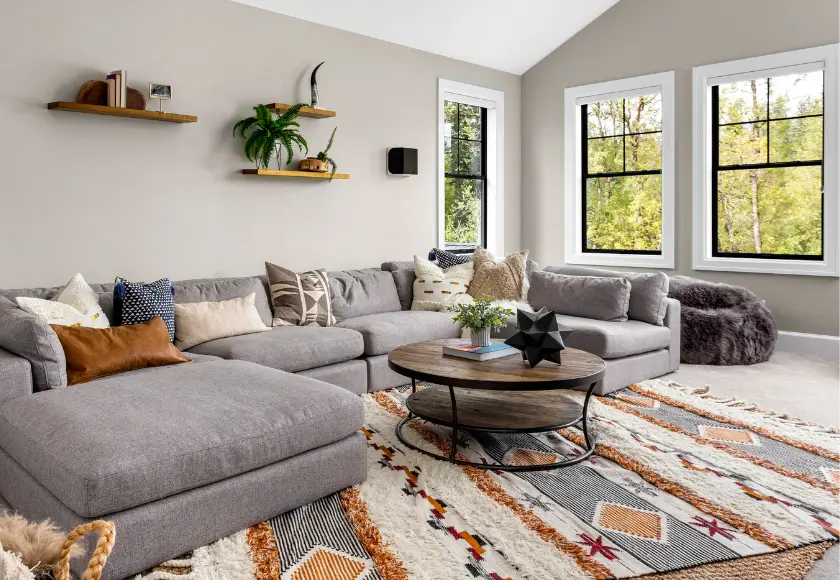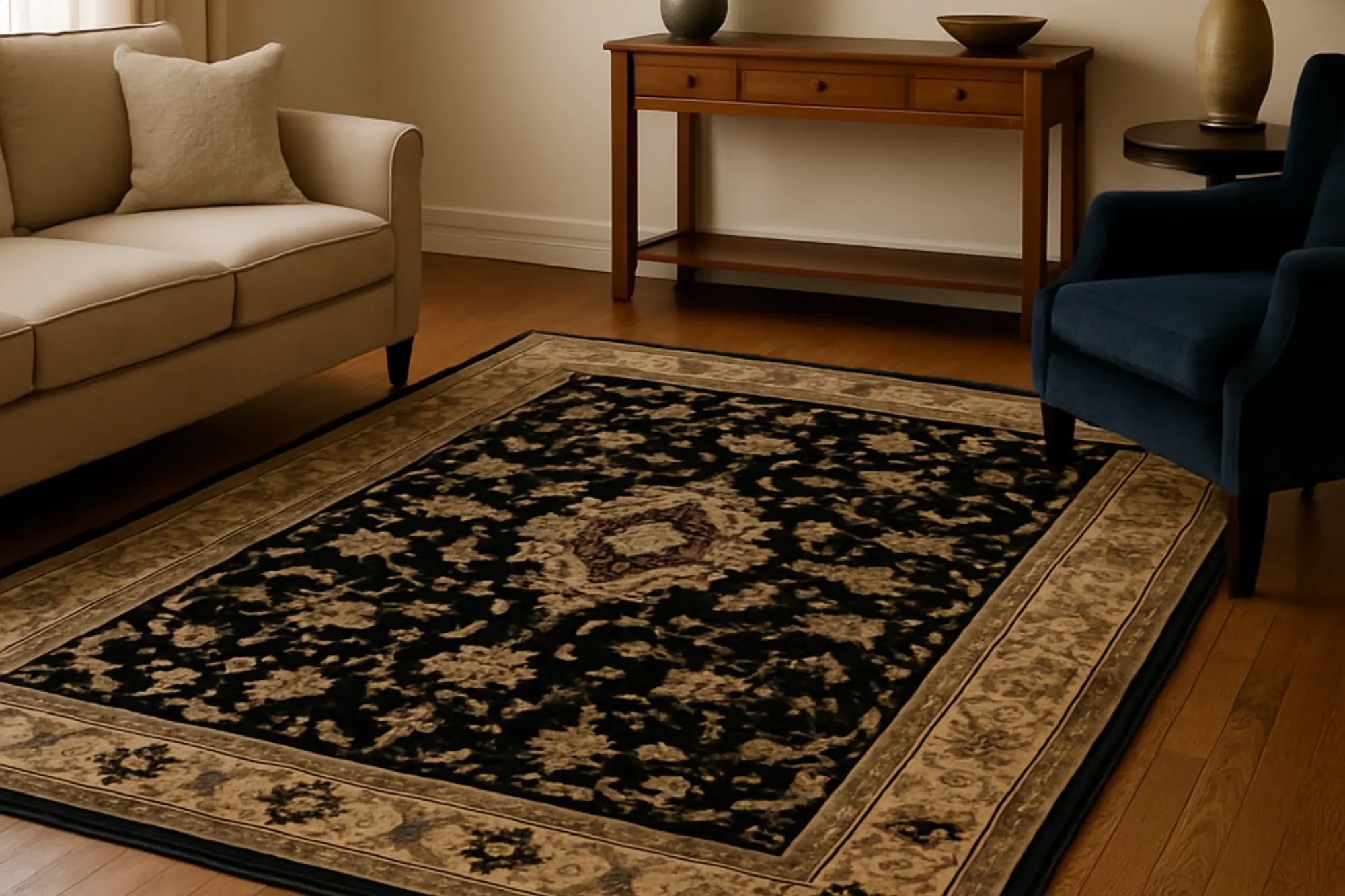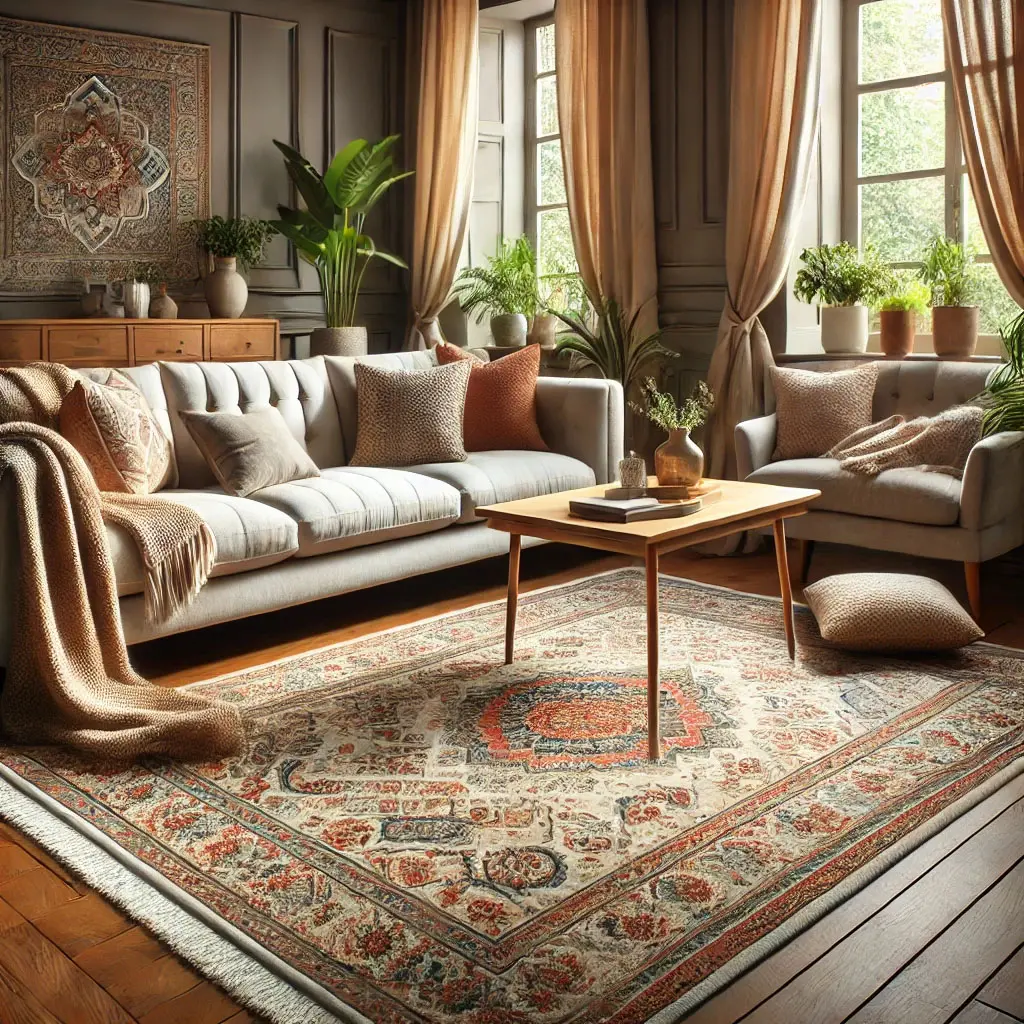The Art of Layering Rugs: A How-to Guide
- Introduction
- Why Layer Rugs?
- Mastering Color Coordination
- Room-Specific Layering Ideas
- Playing with Texture
- Positioning and Placement
- Matching Colors with Your Furniture
- Room-by-Room Layering Tips
- Conclusion
Introduction
Ever stared at your living room and thought, "Is this space missing a 'wow' factor?" The secret might lie beneath your feet! Layering rugs can transform your floor from a blank canvas to a textured masterpiece. In this comprehensive guide, we'll share the ins and outs of layering rugs, revealing secrets that can elevate any room in your house.
Why Layer Rugs?
Before we jump into the how-to, it's essential to understand the why.
- Elevate Visual Drama : Think of your rugs as a canvas, where you can paint a layered story that adds depth and intrigue. Imagine an antique rug peeking out from beneath a modern piece; it's like a history lesson for your floor!
- Enhance Comfort : Who doesn't want a softer landing for their feet? Layering rugs offer extra padding, making it a treat for your feet. Imagine sinking into the softness of a high-pile shag rug over a flat-woven Kilim.
- Flex Your Creativity : Layering rugs is like playing a game of mix and match. You can go as wild or as subtle as you want, experimenting with textures, patterns, and colors.

Mastering Color Coordination
Getting the color coordination right is half the battle. Once you master this, you're well on your way to becoming a rug layering expert.
Pro Examples
- Earth Tones : Start with a base of olive green to give your room a grounded, earthy feel. Then, layer it with a cream rug to introduce softness and contrast.
- Monochrome Magic : For a modern, sleek vibe, layering light gray over dark gray can look exceptionally chic, especially if your furniture is also in neutral tones.
Mastering Color Coordination
Starting with color is like walking before you run. A well-coordinated color palette can make your room sing.
Pro Examples
- Earth Tones : Try a cream rug over an olive green base for a calm, grounded look.
- Monochrome Magic : Layer light gray over dark gray for a sleek, modern aesthetic.
Color Coordination Table
Room | Color Palette | Pro Layering Combos | Recommended Sizes |
Living Room | Earth Tones | Cream over olive green | 9x12 over 8x10 |
Vibrant Colors | Bright red over yellow | 8x10 over 5x7 | |
Monochrome | Light gray over dark gray | 9x12 over 6x9 | |
Dining Room | Warm Neutrals | Beige over brown | 8x10 over 6x9 |
Jewel Tones | Emerald over sapphire | Round 6' over 8x10 | |
Bedroom | Pastels | Lavender over light blue | 9x12 over 5x7 |
Cool Blues | Aqua over navy blue | 8x10 over 4x6 | |
Entryway/Foyer | Classic Neutrals | Black and white | 3x5 runner over 4x6 |
Bold Contrast | Red over black | 4x6 over 2x3 runner |
Note : Finding the right color combo can be a fun journey. Explore color-rich options at Magic Rugs .
Playing with Texture
Variety is the spice of life, and that includes your floor! Mixing textures can add an extra layer of sophistication and tactile pleasure to any room.
Textural Playbook
- Shag over Flatweave : Picture this in a living room setting. A shaggy rug, perfect for sinking your feet into, layered over a flatweave rug with a captivating pattern.
- Seagrass over Wool : Seagrass offers a rustic, beachy vibe, while wool rugs provide classic comfort. This combination could be ideal for a sunroom or an informal living space.
Texture Combinations Worth Trying
- Faux Fur over Oriental
- Berber over Sisal
- Chenille over Jute
Positioning and Placement
Where you place your rugs can dramatically affect the room's look and feel.
- Dining Room Delight : Imagine a round rug placed slightly off-center over a larger square one, making your dining table the star of the show.
- Living Room Layers : Consider placing a faux fur rug partially on a larger jute rug, directly under your coffee table for an extra cozy touch.
Quick Tip : Get creative but keep it functional. Make sure your furniture can sit comfortably on or around your layered rugs.

Matching Colors with Your Furniture
Layering an antique rug over a traditional rug? Or maybe a vibrant red rug over a subtle beige one? Whatever your choices, it's crucial that they coordinate with your furniture.
- Leather Couches : Earthy tones or a contrasting red color rug can work wonders.
- Wooden Furniture : An oriental rug or a Persian rug often provides a beautiful backdrop for classic wooden pieces.
Room-by-Room Layering Tips
Different rooms have unique requirements. For instance, you may want to consider floor heating when choosing a rug for your living room or bedroom.
- Living Room : For extra flair, use a large 9x12 rug as the base and layer with an 8x10 rug.
- Bedroom : Opt for something plush and soft for the bedroom. Wool Rugs or Cotton Rugs make excellent choices for the top layer, creating a cozy atmosphere.
- Dining Room : Consider the size and shape of your dining table when choosing a rug. A vintage rug could make an excellent top layer here, offering a contrast to a more neutral base layer.
- Entryway and Foyer : An entryway rug or foyer rug can set the stage for your home's interior. A small runner rug, perhaps in a bold pattern, layered over a larger, more neutral rug can make a dramatic statement as soon as you walk in.
- Bathroom : Yes, even your bathroom can benefit from rug layering! Opt for materials that are moisture-resistant and easy to clean. A smaller 2x3 bathroom rug could layer over a larger 3x5 rug to add some luxury to this often-overlooked space.
Hot Tip : When choosing rugs for different rooms, always consider Rug Weaving Techniques, Rug Care Tips, and Rug Investment. For example, if you have floor heating, certain materials may be more suitable than others.
Conclusion
Layering rugs isn't an art reserved for the glossy pages of a home decor magazine. It's an accessible form of self-expression, allowing you to experiment with your own unique style and make your space distinctly yours. From mixing antique rugs with modern textures to understanding the importance of size and placement, this guide aims to equip you with the knowledge to layer like a pro.
So, are you ready to embrace the layered rug trend and add that missing "wow" factor to your home? Visit our showroom or click here to begin your rug layering journey at Magic Rugs .
Happy Layering! 🎉
That concludes the guide in Markdown format. Would you like to add anything else?
Explore more trending collections!
Share:




